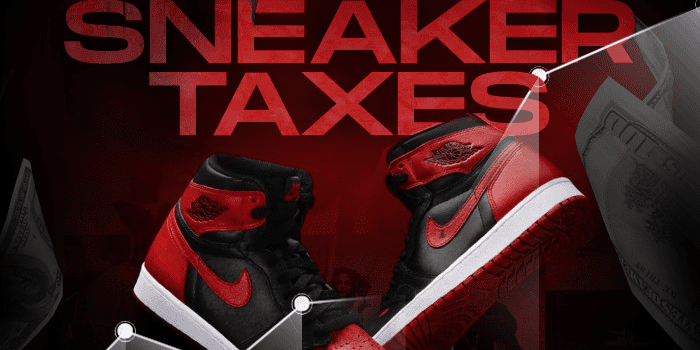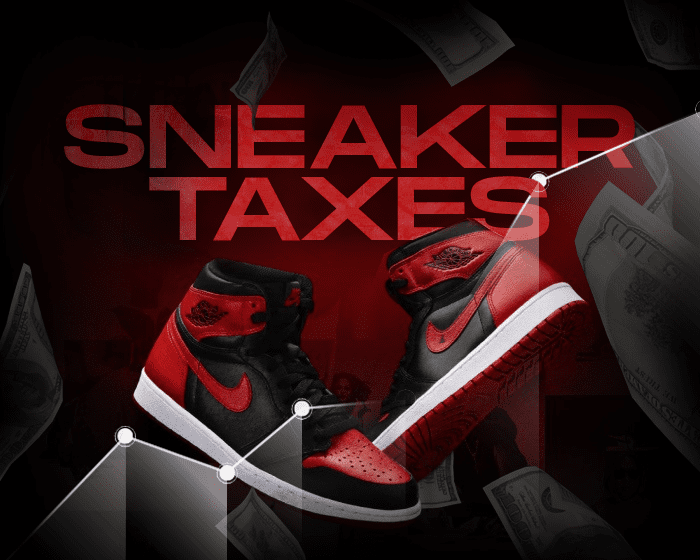The sneaker industry has undergone significant changes since the 1980s. With production shifting overseas and brands like Nike and Jordan dominating the global market. And that’s just on the broad spectrum of events. If you’re to dig into day-to-day sneaker news, so much happens that you can’t keep up! However, newly imposed U.S. sneaker tariffs on imported footwear could take the game to a whole new level. Potentially increasing retail prices, shaking resale markets, and prompting brands to reconsider local manufacturing. So, let’s go over sneaker production’s past, present, and future. And how there might be light and profit at the end of this messy tunnel!
The Evolution of Nike and Jordan’s Manufacturing Process
In the 1980s, Nike and Jordan primarily manufactured their sneakers in South Korea and Taiwan. As labor costs increased, production gradually moved to China, Vietnam, and Indonesia. Where brands could take advantage of cheaper labor and efficient supply chains. This transition allowed Nike and Jordan to scale production, enhance profitability, and meet the growing global demand.
By the 2000s, Vietnam became a manufacturing hub for Nike, producing nearly 50% of its footwear. Meanwhile, China remained a key player in sneaker production, although rising labor costs led to a gradual shift toward Southeast Asia. This globalization enabled sneaker brands to keep retail prices competitive while maintaining high profit margins.
The Impact of U.S. Sneaker Tariffs on Retail Prices
Now, the recent implementation of U.S. sneaker tariffs on footwear imports from Vietnam, Indonesia, and China threatens to disrupt the current manufacturing model. The new tariffs impose a 46% increase on Vietnamese imports, 32% on Indonesian imports, and an additional 34% on Chinese imports. Since Nike and Jordan rely heavily on these countries for production, these tariffs will inevitably raise manufacturing costs.
Retail prices for sneakers are expected to rise as a result. Analysts predict that a $100 sneaker could see a price jump to approximately $132 to compensate for these tariff costs. For consumers, this means higher prices on popular models, including Air Jordans, Dunks, and other sought-after shoes.
Impact of New U.S. Tariffs on Nike and Jordan Sneaker Prices
Analysts expect noticeable price increases on sneakers affecting Nike and Jordan sneaker models. Popular silhouettes like the Air Jordan 1 High and Air Jordan 4 could see price hikes ranging from $20 to $45. Pushing retail prices close to or above the $250 mark! Overall, sneaker tariffs’ impact could result in a 10–20% rise in retail prices, affecting casual buyers and sneaker resellers alike.
| Model | Current Retail Price | Estimated New Price | Estimated Increase |
| Air Jordan 1 High OG | $180 | $200–$215 | $20 to +$35 |
| Air Jordan 4 Retro | $210 | $235–$250 | $25 to +$40 |
| Air Jordan 11 Retro | $225 | $250–$270 | $25 to +$45 |
| Nike Dunk Low | $115 | $125–$140 | $10 to +$25 |
| Nike Air Force 1 Low | $115 | $125–$135 | $10 to +$20 |
| Nike Air Max 90 | $130 | $145–$155 | $15 to +$25 |
| Nike Air Max 270 | $160 | $175–$190 | $15 to +$30 |
| Nike Blazer Mid ’77 | $110 | $120–$130 | $10 to +$20 |
| Nike LeBron 21 | $200 | $220–$240 | $20 to +$40 |
Will Sneaker Tariffs Reshore Manufacturing?
One potential outcome of these tariffs is that brands may seek to bring sneaker production back to the U.S. in an attempt to balance out the impact of international trade policies. However, reshoring production is not a simple process. Compared to Southeast Asia, the U.S. has higher labor costs, strict manufacturing regulations, and limited sneaker production infrastructure.
While local manufacturing could boost the U.S. economy and create jobs, we have to wait and see whether brands like Nike and Jordan will take this big step. Some smaller sneaker brands may see an opportunity to establish a U.S.-based production model and capitalize on the “Made in USA” appeal.
The Rise of U.S.-Based Sneaker Brands
With the spike in production costs overseas, there is a unique window of opportunity for U.S.-based sneaker brands to rise and claim a bigger share of the market. Brands that already manufacture domestically or those willing to invest in American production could position themselves as leaders in quality, craftsmanship, and patriotism.
Strategic collaborations with celebrities, athletes, and influential designers could help these brands gain massive cultural traction. Additionally, by focusing on marketing campaigns emphasizing sustainability, local production, and supporting American jobs, U.S. brands can appeal to consumers looking for ethically-made products. So will lower-key brands be able to secure better strong positions amidst this storm!
How the Sneaker Resale Market Could Be Affected
The sneaker resale market, which thrives on limited-edition releases and high demand, will see some change too. As retail prices rise, resale values may follow suit. However, this increase could also deter casual buyers from engaging in the secondary market, potentially leading to lower overall resale activity.
On the other hand, though, there’s an incredible chance for growth!
In light of increased production costs, sneaker brands like Nike may resort to decreasing stock numbers. You know, to keep their finances in check.Taking us back to where the game started. Extremely limited sneaker releases, faced by crazy non-dying demand. So, if brands reduce production, many silhouettes could become even more valuable on the resale market.
Sneaker Tariffs Vs. Sneaker Bots!
Somehow, everything seems to bring us back to sneaker botting, reselling, and how you can profit from uncertain situations.
As a reseller, you should hold on to your sneaker bot tighter than ever before. If stock numbers go down, your chances of copping profitable releases go down. Unless you have a reliable, successful, and AI-powered sneaker bot. Something like NSB! Which can help you get ANY RELEASE, ANYWHERE you are in the world. And is 50% OFF NOW! So you don’t have to worry about sneaker tariffs, taxes, or any change in the game.
The Future of the Sneaker Industry in a Changing Economy
Initial reactions to increased sneaker tariffs were somewhat negative. Cautious, at best. But take a deep breath and consider all the opportunities ahead!
Imagine the game with far more exclusive Jordans and Dunks. More extravagant collaborations with unexpected sneaker brands. Imagine all the profit you can make reselling fewer pairs!
Yes, retail prices are gonna go up, but as a reseller, you control the narrative. That’s always been the beauty of this game! All you need to do is adjust your pricing strategy and learn which sneakers are best to resell moving forward. Plus, keep an eye on underrated US sneaker brands. They might start taking over the industry!









